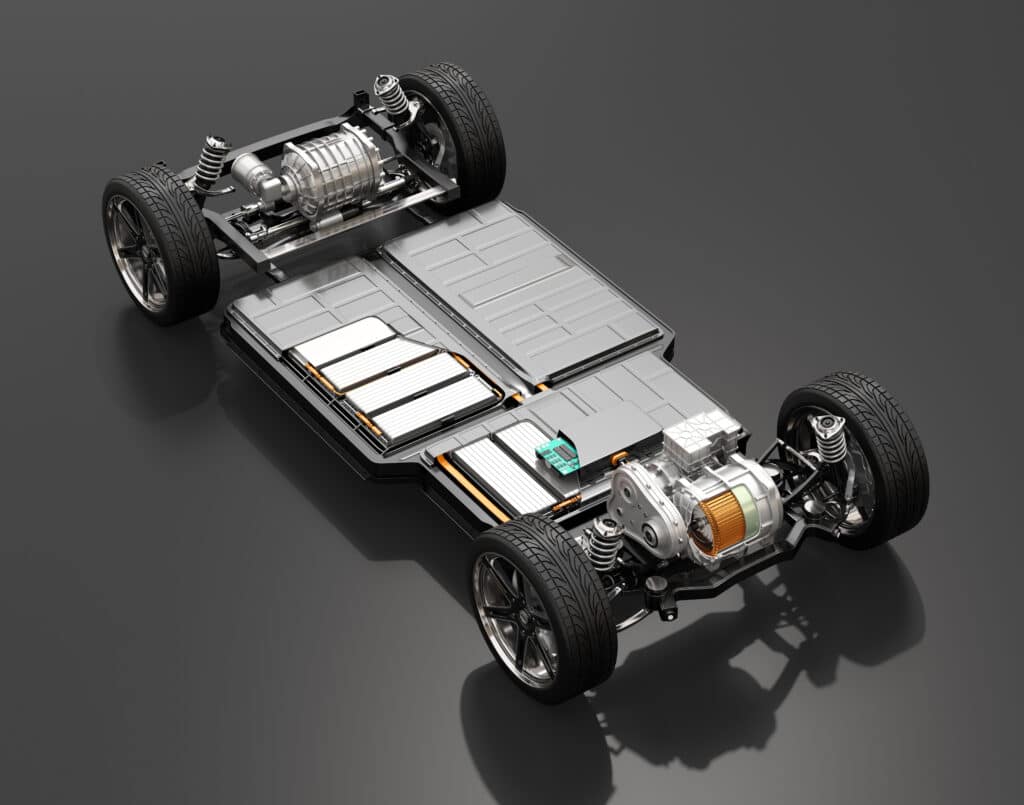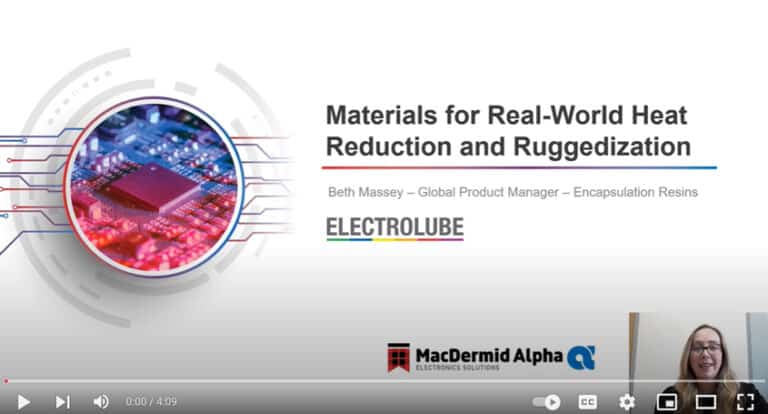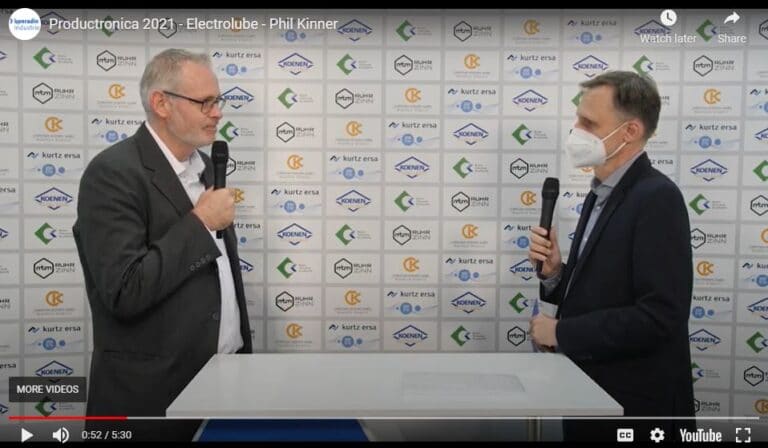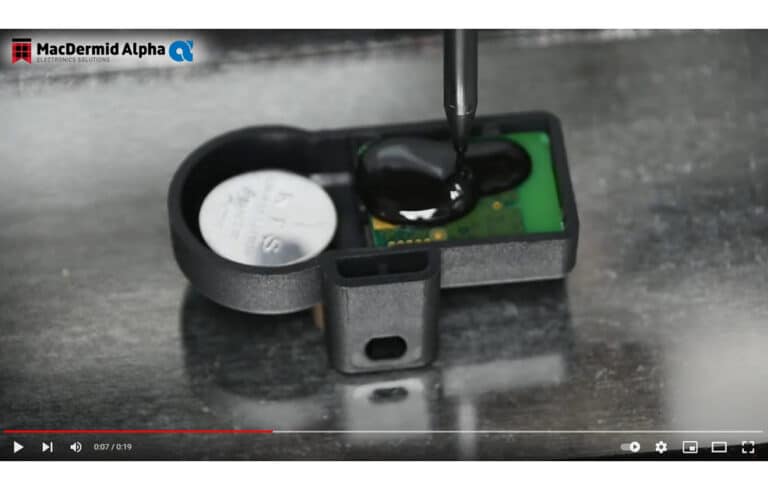In this month’s blog, I will be exploring how resin chemistries can be incorporated by design engineers facing ever increasing new challenges from E-mobility applications. For instance, motors and generators offering higher levels of power output, noise reduction and reliability to name but a few. One of the biggest areas of concern for designers is the issue of heat impacting on battery performance, particularly as drivers crossing over from traditional fuel vehicles to electric will expect no compromise in performance from their new electric/hybrid vehicle. Let’s take a closer look at how resin systems can be implemented to improve performance, safety, reliability and, ultimately, lifetime.
What are the key benefits of using resins in EV applications?
Protecting the electronics is vital to ensuring long-term performance and reliability. Encapsulation resins benefit e-vehicles in numerous ways, including improving thermal conductivity to dissipate heat away from hot spots, improved thermal endurance and stability in chemicals, and fast gap filling to provide resistance towards crack propagation. Use of encapsulation resins can also prevent costly maintenance and repair.
Why Encapsulate Electric Motors?
Historically, varnishing of the rotor and stator windings was common to achieve a minimum level of insulation, such varnishes were solvent based and contained a high percentage of Volatile Organic Compounds (VOCs). However, with increasing environmental awareness, legislation restricts the use of VOCs due to their emissions into the environment. Such varnishes do not fulfil the higher requirements of e-motors in the automotive industry where the challenges are higher power density caused by size reduction, increased power output, reliability, and endurance in harsh environments. This means there are now even more reasons to use encapsulation resins and they deliver plenty of value-added benefits:
All-round Protection – Acting as a barrier to the external environment, encapsulation resins provide physical, chemical, and thermal protection. They can physically dampen the impact of shock vibrations or dampen noise produced by the motor. Some encapsulation resins also benefit from flame retardant properties.
Electrical Insulation – Air and voids can create partial discharges between ground and primary insulation. Encapsulation resins can be used to completely fill all internal spaces, often helped by vacuum potting methods to fill all the tiny spaces to guarantee electrical insulation.
Thermal Dissipation – Some encapsulation resins have high thermal conductivity and are extremely effective at dissipating heat away from hot spots and improve the overall thermal endurance.
Noise, Vibration and Harshness (NVH) – Although e-motors are quieter than traditional internal combustion engines, and have fewer moving parts, electric vehicles create higher frequency noise that can be annoying over a long period of time. Resins are used to handle the NVH and add perceived value for any vehicle owner.
What types of resin solutions are available?
Unlike aerospace applications, where two or three layers of redundancy may be built into systems, automotive designs typically must work first time, every time, throughout the life of the product. We have expansive resin solutions that improve performance and reliability. By way of example, resin solutions for EV applications would include the ER2223 black epoxy resin, which is frequently chosen as the resin material to electrically insulate the coil ends of stator windings found in electric vehicles. This resin is highly resistant towards immersion in chemicals found in electric and hybrid vehicles, including cooling fluids, and has extremely wide operating temperature ranges. Its low viscosity also allows for easy potting of all the tiny spaces between the winding coils.
EV Batteries produce vast amounts of heat during operation and whilst charging. To achieve prolonged battery life and higher efficiency, ER2221 is a highly thermally conductive resin with low viscosity, ideally suited for potting cells within electric vehicle batteries. It also assists with securing cells in place whilst dissipating the heat away to the surroundings. The resin effectively creates a protective shield around the battery, enables adhesion, high temperature resistance, high thermal conductivity, and retention of characteristics throughout the thermal cycling process.
Are customer requirements changing in line with the trend for EV’s and charging systems?
There is clearly a change in customer requirements in line with the trend for EV’s, such as improved range, faster charging times and wider availability of charging stations. With each new iteration, a next generation of design, typically means components get smaller in size and their power output increases. This normally means that the heat generated from higher density power output components increases. In turn, both short- and long- term operating temperatures of resins needs to increase to perform sufficiently. Since resins are used in many areas on a vehicle, from sensors and displays to the motors themselves, lots of development by Electrolube is focused on pushing the limits of thermal performance and thermal conductivity to remain as the solutions provider of choice for the ever-changing automotive industry.
E-mobility is an evolving market, where the various performance criteria for vehicle components is constantly changing to keep up with the latest developments in technology. Encapsulation resins capable of dissipating heat away from hard working components clearly add value to the automotive electronics industry. With multiple research and development facilities, Electrolube is well positioned to quickly respond to these market changes. Our Technical Support Engineers are on hand to support design engineers select the best encapsulation resin for their unique applications. I hope this has been of interest to those of you involved in EV and helps make life a bit easier for those who are responsible for making the decisions on protecting components and circuitry. Look out for my next column, where I will be exploring resin systems in more detail.











